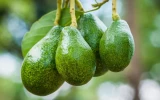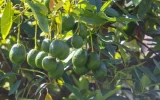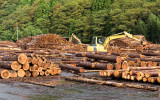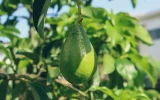When Do Avocado Trees Produce Fruit?
Avocado trees are popular fruit trees known for their delicious and nutritious fruit, which is used in many different recipes. However, these trees are also known for taking their time to mature and produce fruit.
Avocado trees take anywhere from 5 to 13 years to produce fruit from seed. If you're starting with a tree from a nursery, you can expect to wait 3 to 4 years. The variety of avocado trees you choose can also affect the onset of fruiting.
A mature Hass avocado tree can start producing fruit as early as 3–4 years after being planted, while some other varieties may take up to 8–10 years to produce fruit. As you go further through the article, you'll learn more about the onset of fruiting for different avocado varieties.
Understanding avocado tree production cycles sets expectations for when revenues start when starting an avocado farm from scratch.
Summary
- The onset of fruit production for different avocado varieties can range from 2 to 3 years for early producers like Gwen and Ettinger, to 3–4 years for moderate producers like Hass, Fuerte, Reed, Lamb Hass, Pinkerton, Bacon, and 4–5 years for late producers like Zutano and Sharwil.
- Avocado varieties like Hass, Fuerte, Reed, Lamb Hass, Pinkerton, and Bacon are favored for their consistent and reliable fruit production, making them suitable for both commercial orchards and home gardens.
- The unique flowering behavior of avocado trees, known as "protogynous dichogamy," requires the presence of compatible pollinators, such as bees, to ensure successful pollination and fruit set.
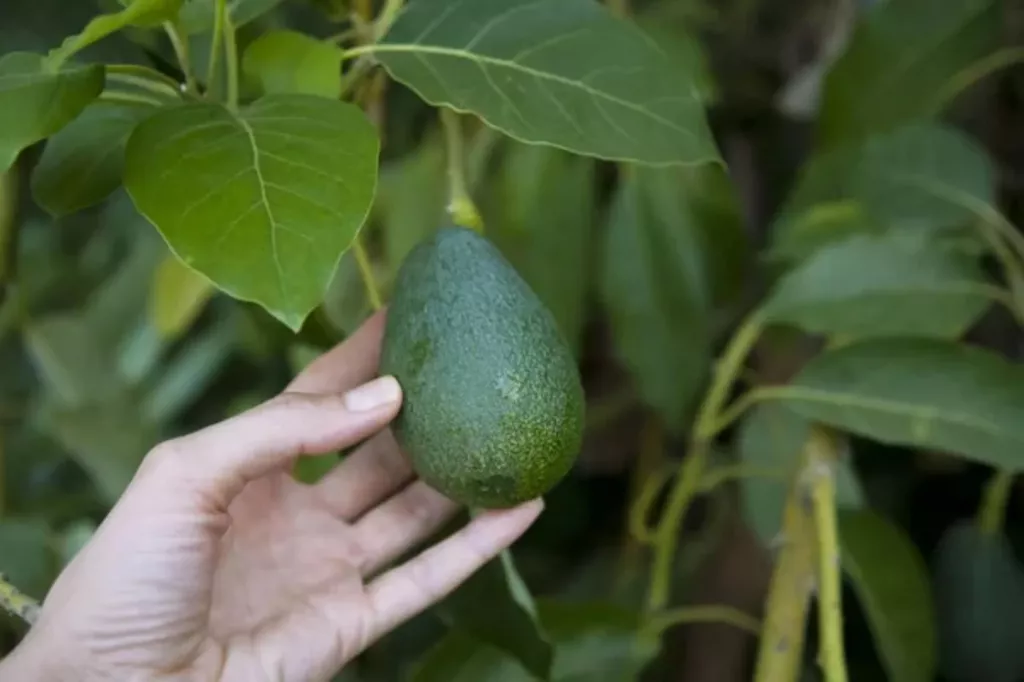
On this page:
The Onset of Fruiting of Different Avocado Varieties
Avocado trees can take anywhere from 5 to 13 years to produce fruit from seed. If you're starting with a tree from a nursery, you can expect to wait 3 to 4 years for it to start producing fruit.
The variety of avocado trees you choose can also affect when it will start producing fruit. For example, Hass avocados typically begin to bear fruit in their third year, while other varieties may take longer.
The table below provides an overview of the estimated onset of fruit production for various avocado varieties:
| Avocado Variety | Estimated Onset of Fruit Production |
|---|---|
| Hass | 3-4 years |
| Fuerte | 3-4 years |
| Reed | 3-4 years |
| Lamb Hass | 3-4 years |
| Pinkerton | 3-4 years |
| Gwen | 2-3 years |
| Bacon | 3-4 years |
| Zutano | 4-5 years |
| Ettinger | 2-3 years |
| Sharwil | 4-5 years |
Avocado varieties with early fruit production (2-3 years)
The Gwen avocado variety produces fruits as early as 2-3 years
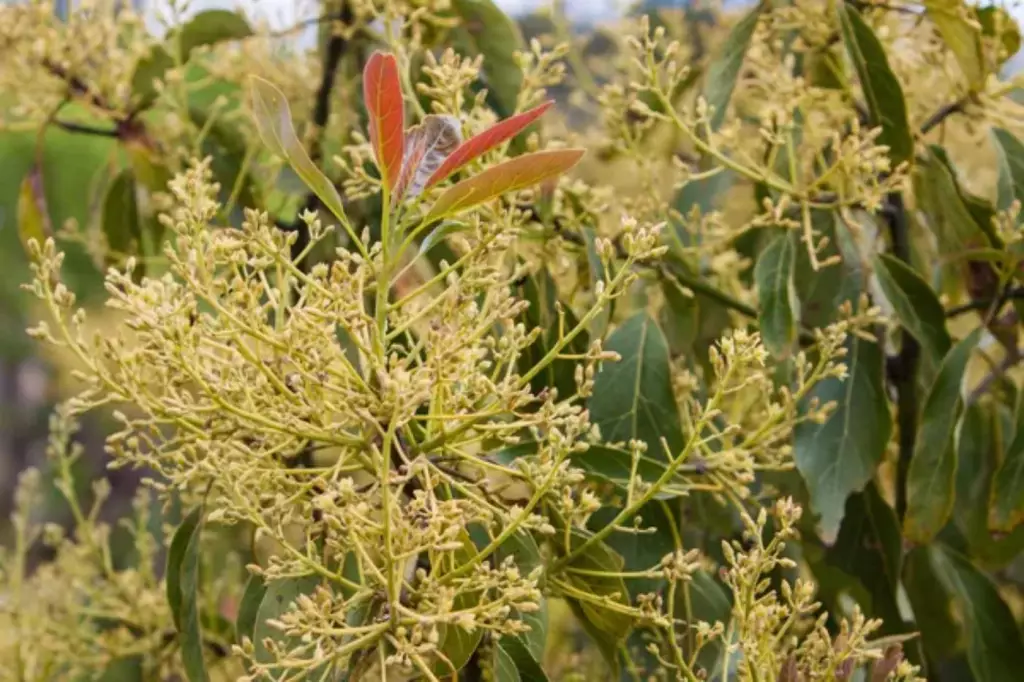
The Gwen avocado variety is known for its early fruit production, typically yielding fruit within 2-3 years after planting. This early fruiting characteristic makes it a popular choice for avocado growers who are looking for relatively quick returns on their investment.
The fruit of the Gwen avocado is medium-sized with a creamy texture and a rich, nutty flavor. The tree itself is compact and well-suited for smaller yards or orchards, making it an attractive option for home gardeners as well.
The Ettinger avocado variety also has early fruit production
On the other hand, the Ettinger avocado variety is also recognized for its early fruit production, often bearing fruit within 2-3 years of being planted.
The Ettinger avocado is an Israeli variety that is prized for its smooth, thin skin and mild, buttery flavor. The fruit is medium to large in size and has a long, slender shape.
The tree is known for its high productivity and adaptability to a range of growing conditions, making it a favorable choice for commercial orchards as well as home gardens.
Avocado varieties with moderate fruit production (3-4 years)
The Hass variety produces fruits as early as the 3rd year
Hass avocado trees typically start producing fruit within 3-4 years after planting. Once mature, a healthy Hass avocado tree can yield a moderate to high amount of fruit.
The Hass variety is known for its consistent and abundant fruit production, making it one of the most popular avocado varieties in the world.
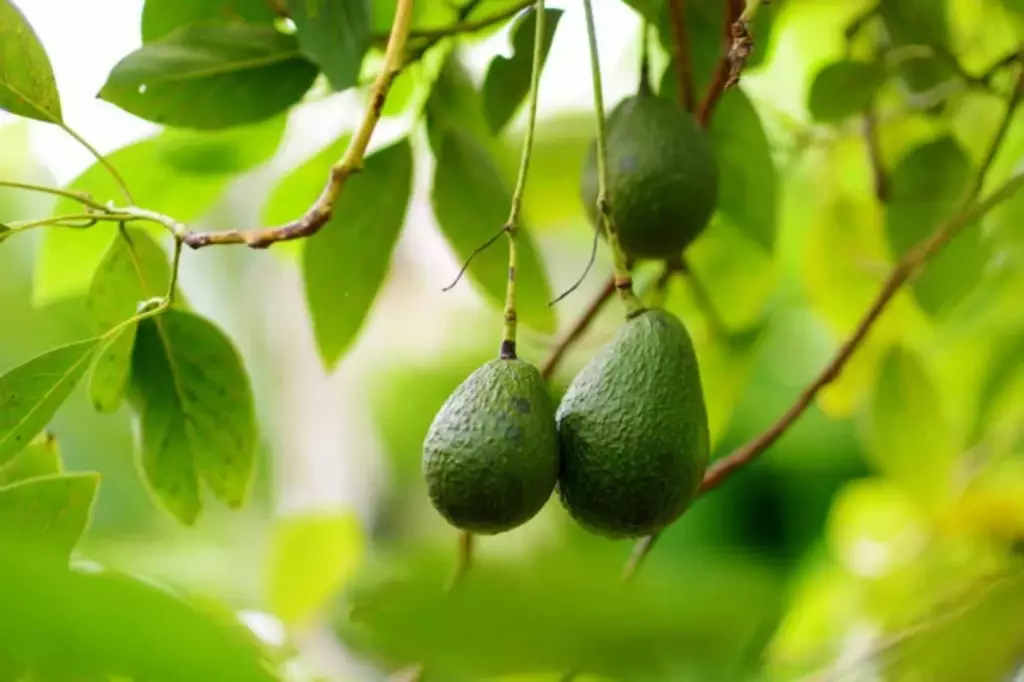
Fuerte avocados can produce fruits within 3 to 4 years of planting
Fuerte avocados are known for their early and consistent fruit production. Within 3-4 years, a Fuerte avocado tree can start producing a moderate to high yield of fruit.
The fruit production of the Fuerte variety is generally reliable, and the trees are known for their biennial-bearing habit.
Reed avocados can also produce fruit within 3-4 years of planting
Reed avocados also exhibit good fruit production within 3-4 years of planting. The fruit yield of Reed avocados can be moderate to high, and the variety is valued for its large, round fruits and creamy texture.
Reed avocado trees are known for their consistent fruit production once they reach maturity.
Lamb Hass can yield fruits within 3 - 4 years
The Lamb Hass avocado variety is a type of avocado known for its creamy texture and rich flavor. Within 3-4 years, a well-cared-for Lamb Hass avocado tree can yield a moderate to high amount of fruit.
It is a hybrid of the Hass and Gwen avocado varieties, resulting in a fruit with a high oil content and a small seed. The Lamb Hass avocado tree typically produces fruit from late fall to early spring, with the peak harvesting season varying depending on the specific growing region.
This variety is favored by many for its delicious taste and is a popular choice for home orchards and commercial cultivation.
Pinkerton avocados are known for their relatively quick fruit set
Pinkerton avocados, a popular variety among avocado enthusiasts, are known for their relatively quick fruit set, typically within 3-4 years of planting.
This characteristic makes them an attractive choice for growers looking for a relatively short time frame to start harvesting fruits. Once established, Pinkerton avocado trees are capable of producing a moderate to high yield of fruits, and they are recognized for their consistent and reliable production.
One of the distinguishing features of Pinkerton avocados is their elongated shape, which sets them apart from other avocado varieties. This unique appearance adds to their appeal, especially in culinary applications and presentations.
Furthermore, Pinkerton avocados are highly regarded for their excellent flavor, making them a sought-after choice for consumers who appreciate the rich, creamy taste and buttery texture that avocados are known for.
Bacon avocados start yielding fruits within 3-4 years of being planted
Bacon avocados, a variety known for their early fruit production, typically start yielding a moderate amount of fruit within 3-4 years of being planted.
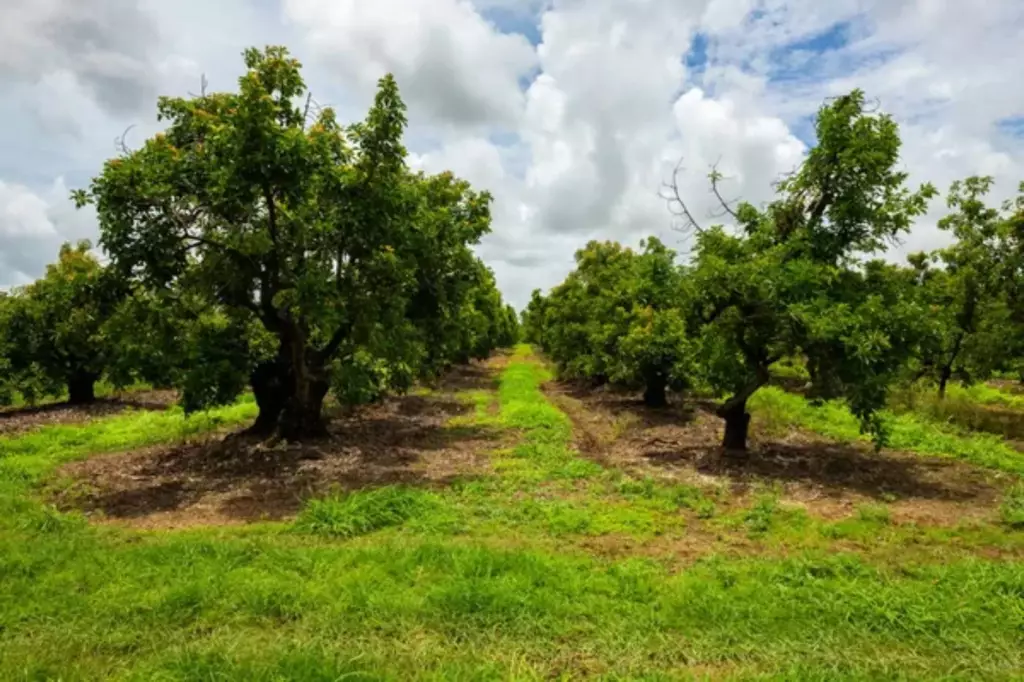
These trees are generally reliable in bearing fruit, and the fruit production of the Bacon variety can be consistent. They are well-appreciated for their smooth texture and mild flavor, making them a popular choice for avocado enthusiasts.
With their reliable fruit production and desirable taste, this variety is a favored option for those looking to cultivate their own avocado trees.
Avocado varieties with late fruit production (4-5 years)
Zutano avocados produce fruits between 4 to 5 years
Zutano, known for its pear-shaped fruit with smooth, thin skin, is recognized for its ability to bear fruit relatively early compared to other avocado varieties. However, it still falls within the typical 4-5 year timeframe for significant fruit production.
The delayed fruiting of Zutano can be attributed to its genetic predisposition and the natural growth cycle of avocado trees. Avocado trees generally undergo a period of vegetative growth before transitioning to reproductive growth, during which they start producing flowers and ultimately fruit.
This transition takes time, and the tree needs to reach a certain level of maturity before it can allocate resources towards fruit production. This variety of avocados is also adapted to high-density planting.
The Sharwil avocado variety exhibits delayed fruit production
Similarly, Sharwil, a Hawaiian variety prized for its rich, creamy texture and nutty flavor, also follows the pattern of delayed fruit production.
Factors such as environmental conditions, soil quality, and proper care also play a role in the timing of fruit production. Adequate sunlight, irrigation, and nutrition are essential for the tree to reach maturity and start bearing fruit.
Furthermore, the avocado tree's reproductive cycle is influenced by its internal hormonal balance, which dictates when it transitions from vegetative growth to flowering and fruiting.
This process is regulated by various environmental cues, including temperature, day length, and water availability. As a result, the timing of fruit production can vary slightly based on the specific growing conditions of the orchard or garden.
Factors Affecting Avocado Tree Fruit Production
The productivity of avocado trees is influenced by various biological, environmental, and management-related factors. Here are some key factors that can impact avocado tree fruit production:
Climate and weather requirements that affect fruit setting in avocados
Avocado trees have specific climate and weather requirements that are crucial for their growth and fruit production. These trees thrive in subtropical and tropical regions, typically requiring a climate that is free from frost and extreme heat.
They are also sensitive to frost, and temperatures below 30°F (-1°C) can cause damage to the tree and its fruit. Therefore, regions with mild, frost-free winters are ideal for avocado cultivation.
In terms of temperature, avocado trees prefer a climate with moderate temperatures, generally between 60°F to 85°F (15°C to 29°C). High temperatures, especially above 100°F (38°C), can negatively impact fruit set and overall tree health.
While avocado trees can tolerate a range of humidity levels, they generally prefer areas with moderate humidity. High humidity can create favorable conditions for diseases, such as root rot, while low humidity can lead to water stress in the trees.
These trees also require well-distributed rainfall throughout the year, with an average of 50 to 100 inches (127 to 254 cm) annually. However, excessive rainfall or prolonged periods of drought can have adverse effects on fruit production and overall tree health.
The quality and fertility of the soil play a crucial role in the tree's productivity
Avocado trees require a well-balanced and nutrient-rich soil environment to thrive and produce high-quality fruit. Nutrients such as nitrogen, phosphorus, and potassium are crucial for the development of healthy trees and the formation of high-quality fruit.
Adequate levels of these nutrients in the soil are necessary to support the various physiological processes involved in fruit production, such as flowering, fruit set, and fruit development.
Avocado trees generally prefer slightly acidic to neutral soil conditions, with a pH range of 6.0 to 7.0 being optimal for growth and fruit production.
Soil pH directly influences nutrient availability and uptake by the trees, and maintaining the appropriate pH level is essential for ensuring that the necessary nutrients are readily accessible to the trees.
Furthermore, soil drainage is a critical factor that impacts the health and productivity of avocado trees. Avocado trees are sensitive to waterlogged conditions, and poor soil drainage can lead to root suffocation and various physiological disorders.
Therefore, ensuring proper soil drainage helps prevent waterlogging and maintaining healthy root systems, which in turn supports the overall health and productivity of the trees.
Proper pruning helps maintain the productivity of avocado trees
Pruning is essential for controlling the size of the tree, promoting air circulation, and optimizing light penetration, all of which are critical factors that can positively influence fruit production.
When avocado trees are pruned effectively, it helps in controlling their size, ensuring that they do not become overly large and unmanageable.
This is important because excessively large trees can be difficult to harvest and maintain, making it challenging to access the fruit and manage the overall health of the tree.
By controlling the size through pruning, the tree can allocate its resources more effectively, leading to better fruit production.
Additionally, it promotes air circulation within the canopy of the avocado tree. Adequate air movement is essential for reducing the risk of diseases and pests, which can significantly impact fruit production.
Improved air circulation can help in preventing the development of fungal diseases and other issues that may affect the health and yield of the tree.
Effective pest and disease management ensures healthy fruit development
Avocado trees are vulnerable to a variety of pests and diseases that can significantly affect fruit production. Pests such as avocado lace bug, avocado mite, and various types of beetles can damage the leaves, flowers, and fruit, leading to reduced yield.
Additionally, diseases like root rot, anthracnose, and avocado sunblotch viroid can weaken the tree and hinder fruit development.

Integrated pest management (IPM) techniques, which involve a combination of biological, cultural, and chemical control methods, can help mitigate the impact of pests and diseases on avocado trees. Here are some of the things you can do to manage pests and diseases:
- Biological control methods, such as introducing natural predators of avocado pests, can help keep pest populations in check.
- Cultural practices, including proper irrigation, mulching, and maintaining optimal tree nutrition, can enhance the tree's ability to resist pests and diseases.
- Targeted and judicious use of chemical controls, such as pesticides and fungicides, can be employed when necessary to prevent extensive damage to the trees and fruit.
- Regular monitoring of avocado trees for signs of pest infestation or disease symptoms is essential for early detection and intervention. Timely application of appropriate management strategies can help minimize the impact of pests and diseases on avocado trees, thereby supporting healthy fruit development.
Understanding the fruit production cycle of avocado trees, including how long it takes for them to bear fruit, can help farmers plan appropriately.
The Role of Pollination in Avocado Fruit Development
Avocado trees are unique in that they have a type of flowering behavior known as "protogynous dichogamy," where the female and male flower parts mature at different times.
This necessitates the presence of compatible pollinators, such as bees, to ensure successful pollination and fruit set. Insufficient pollination can lead to poor fruit production.
Avocado trees are classified as either "A" or "B" type based on their flowering and pollination patterns. "A" type avocado trees open as female on the first day and male on the second day, while "B" type avocado trees open as male on the first day and female on the second day. To maximize the fruit set, it is recommended to plant both an "A" and a "B" type tree within 30 feet of each other.
However, pollination failure is a common occurrence faced by avocado growers. This can be caused by a variety of factors, including weather conditions, lack of pollinators, or poor tree health.
To address pollination challenges, perhaps consider introducing additional pollinators to your avocado orchard, such as honeybees or bumblebees.
You can also try hand pollination by collecting and transferring pollen from the male flowers to the female flowers using a small brush or cotton swab.
Remember, not all avocado trees are self-fertile, so it is important to plant both an "A" and a "B" type tree for optimal fruit production. With proper care and attention to pollination, your avocado tree will bear fruit and provide you with a bountiful harvest.
